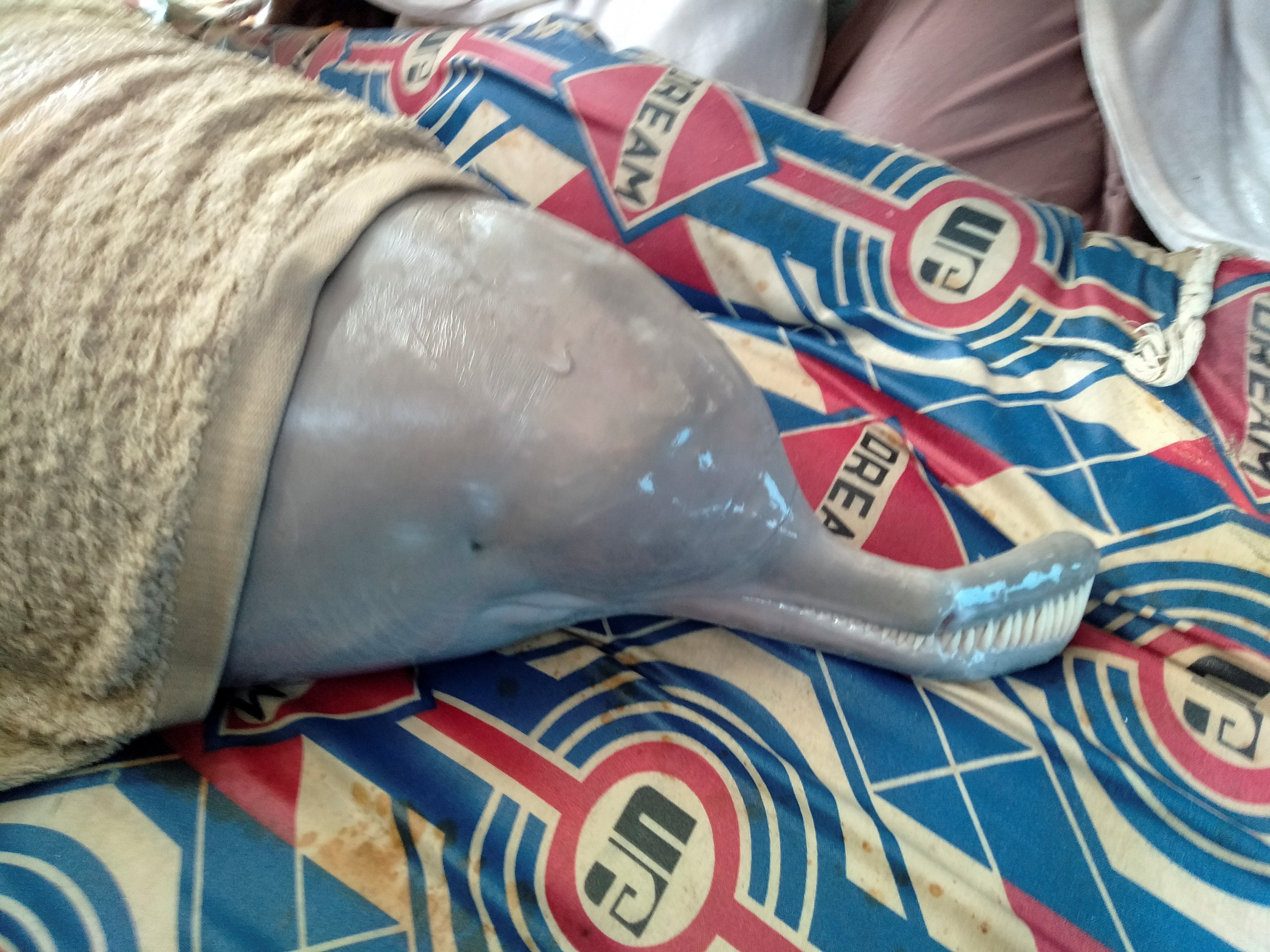Endangered, blind river dolphin rescued from busy canal in Pakistan
The dolphin was carried to a sanctuary in a truck with people constantly sprinkling water over it

Your support helps us to tell the story
From reproductive rights to climate change to Big Tech, The Independent is on the ground when the story is developing. Whether it's investigating the financials of Elon Musk's pro-Trump PAC or producing our latest documentary, 'The A Word', which shines a light on the American women fighting for reproductive rights, we know how important it is to parse out the facts from the messaging.
At such a critical moment in US history, we need reporters on the ground. Your donation allows us to keep sending journalists to speak to both sides of the story.
The Independent is trusted by Americans across the entire political spectrum. And unlike many other quality news outlets, we choose not to lock Americans out of our reporting and analysis with paywalls. We believe quality journalism should be available to everyone, paid for by those who can afford it.
Your support makes all the difference.A blind Indus river dolphin was rescued from a busy canal in southern Pakistan’s Sindh province and moved to a sanctuary in a truck.
The endangered species of toothed dolphin that’s normally found in the Indus river of Pakistan and parts of India had strayed from its freshwater route and ended up in a busy canal in Pakistan’s southern Sindh province.
The grey dolphin was trapped in a net by the rescue staff and boarded on a truck, where water was sprinkled on it throughout the 82 kilometres-long journey to keep it alive.
“We have to try and get it to the river as soon as possible,” Mir Akhtar Hussain Talpur, an official of the provincial wildlife department, told Reuters news agency during their journey.
The crucial task required the dolphin’s skin to be constantly moist while ensuring the liquid didn’t block its blowholes.
“When we are taking a rescued dolphin to the river, we have to be very careful,” he said.
The blind Indus dolphin is also known as a side-swimming dolphin or bhulan in Urdu and is very similar to the Gangetic dolphins found in India.
The species is now endangered and has declined by 80 per cent since 1870. Now it can only be spotted in one-fifth of the Indus river area it once dominated. As of 2017, it is estimated that there are only about 1,800 dolphins remaining in the area. The species is incapable of forming clear images on the retina, however, they can still sense light.
The Indus dolphin is now the second most endangered cetacean in the world and is listed by the International Union of Conservation of Nature (IUCN) as endangered on their red list of threatened species and by the US government national marine fisheries service under the US endangered species act.
One of the main reasons behind the reducing number of Indus dolphins is reckless fishing which exhausts their food supply. However, the dolphins sometimes also get entangled in fishing nets.
Join our commenting forum
Join thought-provoking conversations, follow other Independent readers and see their replies
Comments